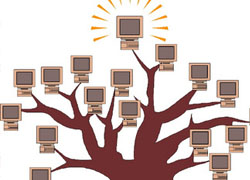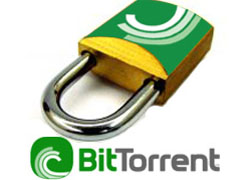IMDEA Networks

Event Category: In-house Presentation
Path ASSEMBLER: A BGP-Compatible Multipath Inter-domain Routing Protocol
The amount of redundant paths among ASes has dramatically increased throughout the Internet. Unfortunately, the unipath nature of BGP constrains border routers to course traffic across a single path at a time. Although, multipath inter- domain routing is able to provide richer routing configurations, the lack of incentives to replace BGP as inter-domain routing protocol implies that multipath solutions must be backwards compatible with BGP.
Read more arrow_right_altEnergy-efficient fair channel access for IEEE 802.11 WLANs
Abstract-Greening the communication protocols is nowadays recognized as a primary design goal of future global network infrastructures. The objective function for optimization is the amount of information transmitted per unit of energy, replacing the amount of information transmitted per unit of time (i.e., throughput). In this paper we investigate the case of IEEE 802.11- based WLANs and first show that, given the existing diversity of power consumption figures among mobile devices, performing a fair allocation of resources among devices is challenging.
Read more arrow_right_altPerformance evaluation of a Tree-Based Routing and Address Autoconfiguration for Vehicle-to-Internet Communications
Vehicular ad hoc networks have proven to be quite useful for broadcast alike communications between nearby cars, but can also be used to provide Internet connectivity from vehicles. In order to do so, vehicle-to-Internet routing and IP address autoconfiguration are two critical pieces. TREBOL is a tree-based and configurable protocol which benefits from the inherent tree-shaped nature of vehicle to Internet traffic to reduce the signaling overhead while dealing efficiently with the vehicular dynamics.
Read more arrow_right_altUnrevealing the structure of live BitTorrent Swarms: methodology and analysis
BitTorrent is one of the most popular application in the current Internet. However, we still have little knowledge about the topology of real BitTorrent swarms and how the traffic is actually exchanged among peers. This paper addresses fundamental questions regarding the topology of live BitTorrent swarms. For this purpose we have collected the evolution of the graph topology of 250 real torrents from its birth during a period of 15 days. Using this dataset we first demonstrate that real BitTorrent swarms are neither random graphs nor small world networks.
Read more arrow_right_altFakeDetector: A measurement-based tool to get rid out of fake content in your BitTorrent Downloads
Fake content represents an important portion of those files shared in BitTorrent. In this paper we conduct a large scale measurement study in order to analyse the fake content publishing phenomenon in the BitTorrent Ecosystem. Our results reveal that a few tens of users are responsible for 90% of the fake content. Furthermore, more than 99% of the analysed fake files are linked to either malware or scam websites. This creates a serious thread for the BitTorrent ecosystem.
Read more arrow_right_altWhere are my followers? Understanding the Locality Effect in Twitter
Twitter is one of the most used applications in the current Internet with more than 200M accounts created so far. As other large-scale systems Twitter can obtain benefit by exploiting the Locality effect existing among its users. In this paper we perform the first comprehensive study of the Locality effect of Twitter. For this purpose we have collected the geographical location of around 1M Twitter users and 16M of their followers. Our results demonstrate that language and cultural characteristics determine the level of Locality expected for different countries.
Read more arrow_right_altExplicitly Accommodating Origin Preference for Inter-Domain Traffic Engineering
Inter-domain traffic engineering is an important aspect of network operation both technically and economically. Traffic engineering the outbound direction is less problematic as routers under the control of the network operator are responsible for the way traffic leaves the network. The inbound direction is considerably harder as the way traffic enters a network is based on routing decisions in other networks.
Read more arrow_right_altBounds on QoS-Constrained Energy Savings in Cellular Access Networks with Sleep Modes
Sleep modes are emerging as a promising technique for energy-efficient networking: by adequately putting to sleep and waking up network resources according to traffic demands, proportionality between energy consumption and network utilization can be approached, with important reductions in energy consumption. Previous studies have investigated and evaluated sleep modes for wireless access networks, computing variable percentages of energy savings.
Read more arrow_right_altDistributed Opportunistic Scheduling: A Control Theoretic Approach
Distributed Opportunistic Scheduling (DOS) techniques have been recently proposed to improve the throughput performance of wireless networks. With DOS, each station contends for the channel with a certain access probability. If a contention is successful, the station measures the channel conditions and transmits in case the channel quality is above a certain threshold.
Read more arrow_right_altCIPT: Using Tuangou to Reduce IP Transit Costs
A majority of ISPs (Internet Service Providers) support connectivity to the entire Internet by transiting their traffic via other providers. Although the transit prices per Mbps decline steadily, the overall transit costs of these ISPs remain high or even increase, due to the traffic growth. The discontent of the ISPs with the high transit costs has yielded notable innovations such as peering, content distribution networks, multicast, and peer-to-peer localization.
Read more arrow_right_alt











Recent Comments